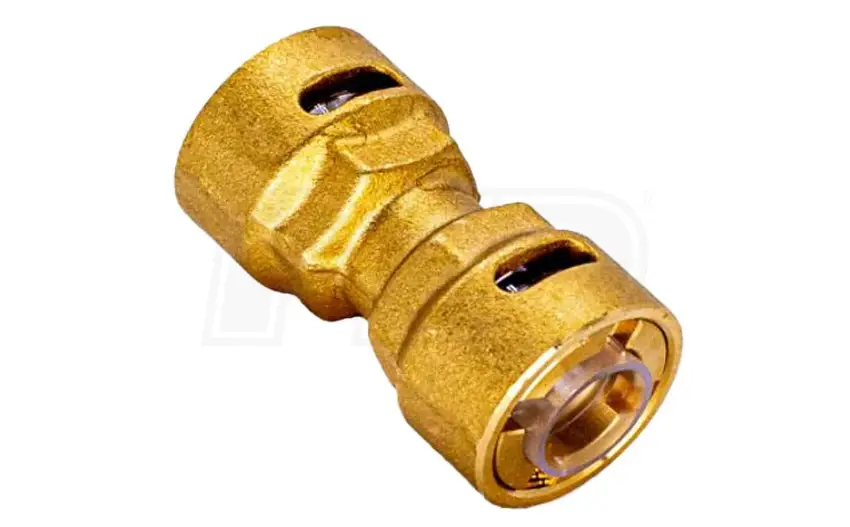Refrigerant quick connect fittings – ever heard about ’em? They’re the small but mighty connectors that keep our HVAC systems running smoothly. These fittings, as mundane as they might sound, are vital cogs in the grand machine that is your HVAC system. They ensure that refrigerants flow efficiently, facilitating the cooling process. So, if you’re curious about how they work, what they’re made of, and how to install and maintain them, you’ve come to the right place.

Table of Contents
Introduction to Refrigerant Quick Connect Fittings
When it comes to HVAC, refrigerant quick connect fittings are the real deal. They’re these nifty little connectors designed to quickly link refrigerant lines. Their primary role? To ensure a secure and leak-free connection, and boy, do they do a good job!
Understanding Refrigerant Quick Connect Fittings
Imagine trying to fill a water balloon without a nozzle. Crazy, right? That’s how chaotic an HVAC system would be without these fittings. They provide a fast and secure way to connect refrigerant lines, making them a critical component in refrigeration systems. But what’s their secret? Let’s find out!
Purpose and Function of Quick Connect Fittings in Refrigeration
You know what they say – small packages often come with big surprises. And these fittings? They’re no different. Their main job is to form a secure connection, helping refrigerants flow smoothly. By doing so, they prevent leaks, ensuring your HVAC system works efficiently. Ain’t that something?
Types of Refrigerant Quick Connect Fittings
Not all quick connect fittings are created equal. There’s a variety out there, each with its unique features. From push-to-connect to threaded fittings, there’s a fitting for every refrigerant line. How do you know which one’s for you? We’ll cover that in another article, so stay tuned!
Click here for more information on refrigerants – – Articles on Refrigerants: The Ultimate Guide to Understanding Them
The Components and Design of Refrigerant Quick Connect Fittings
Ever looked at a quick connect fitting and wondered what it’s made of? Let’s pull back the curtain and take a peek at the inner workings of these fittings.
Materials Used in Quick Connect Fittings
Most quick connect fittings are made of brass or plastic. Why? Because these materials are durable, resistant to corrosion, and can handle the pressure and temperature changes in an HVAC system. Pretty cool, huh?
Understanding the Durability and Resistance of Materials
Brass or plastic – why do these materials rock? They’re not just durable but also resistant to corrosion, temperature changes, and pressure. It’s like they’re built for the job! And that’s why they make up most of the quick connect fittings out there.
Design and Functionality of Refrigerant Quick Connect Fittings
When it comes to their design, quick connect fittings are a marvel. They’re designed to ensure a secure connection, prevent leaks, and withstand the rigors of an HVAC system. But that’s not all – they also feature seals to maintain a tight connection.
The Role of Seals in Quick Connect Fittings
Seals in quick connect fittings are like the tight handshake that seals a deal. They ensure a secure connection, preventing leaks and ensuring the efficient flow of refrigerant. It’s like they’ve got your HVAC system’s back!
Installation and Use of Refrigerant Quick Connect Fittings
Ever thought about installing refrigerant quick connect fittings yourself? With a little know-how, you can do it! Let’s walk you through the process.
Steps to Install Quick Connect Fittings
Installing these fittings isn’t rocket science. It’s all about following the right steps – cut the tube, insert the tube into the fitting, and voila, you’re done! But remember, safety first!
Safety Precautions During Installation
When installing quick connect fittings, safety should be your top priority. Always wear safety glasses and gloves to protect your eyes and hands. And, if something feels off, don’t hesitate to call in a pro. Better safe than sorry, right?
How to Disconnect Refrigerant Quick Connect Fittings
Disconnecting these fittings is a cinch! Just push in the collet against the fitting, and gently pull out the tube. And there you have it – a quick and easy disconnect!
Handling and Storage of Quick Connect Fittings Post-Disconnect
After disconnecting, don’t just toss these fittings aside. Store them in a clean, dry place to prevent damage. And remember, handle with care – they might be tough, but they’re not indestructible.
Troubleshooting and Maintenance of Refrigerant Quick Connect Fittings
Like any other component, these fittings can face some issues. But don’t fret! With the right tips, you can troubleshoot and maintain them like a pro.
Common Issues with Quick Connect Fittings
Leaking? Loose connection? These are some common issues you might face with quick connect fittings. But hey, every problem has a solution, and we’ve got you covered!
How to Resolve These Issues
Got a leak? Check the seal. Loose connection? Make sure the fitting is properly installed. With a little patience and the right steps, you can fix these issues in no time.
Maintenance Tips for Refrigerant Quick Connect Fittings
Want your fittings to last longer? Regular maintenance is key. Clean them regularly, check for damage, and replace the seals if necessary. Remember, a little care goes a long way!
Conclusion
So there you have it, everything you need to know about refrigerant quick connect fittings. These unsung heroes of the HVAC world may not seem like much, but they play a vital role in keeping your system running smoothly. So the next time you crank up the AC, spare a thought for these nifty little connectors!